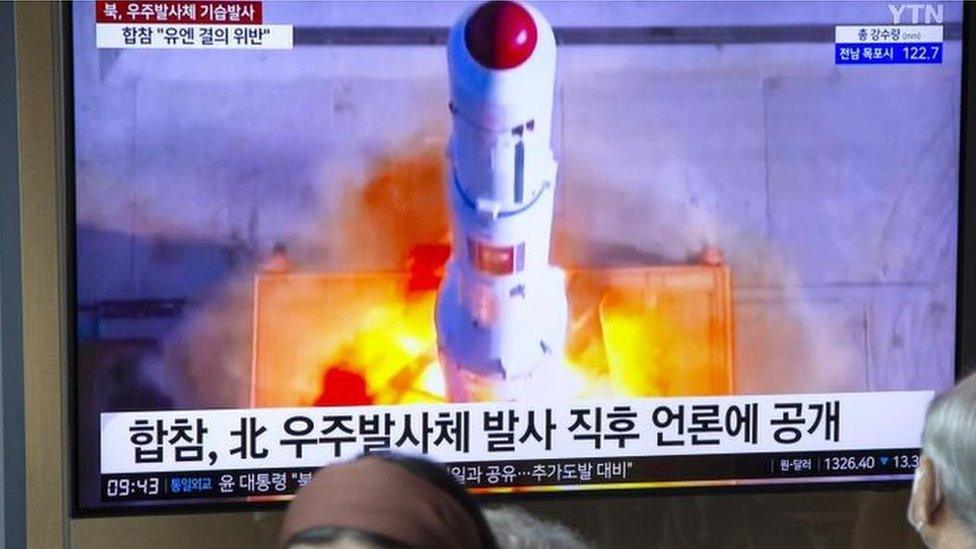Why is North Korea saying it's watching the White House?
- Published

Kim Jong Un, clasping hands with his daughter (left), poses for a picture with scientists and engineers who worked on the North's satellite launch.
North Korea has declared it's got the White House in its sights thanks to its new spy satellite - which the regime says is up and running, although the West has its doubts.
Still, leader Kim Jong Un has been crowing over his new surveillance toy; and he's been happily sharing the alleged results.
Reports put out by state media on Tuesday trumpeted a list of targets the North says it's seen: the White House, the Pentagon and air force bases along the US north-east coast and in its Pacific territory of Guam.
Closer to home, Pyongyang also listed South Korean military targets and its port city of Busan. Further afield and slightly more baffling: Rome.
But while the scope might at first seem impressive, there may be less to it than meets the eye.
"I will say that there are plenty of images of the Pentagon and the White House online," said a US military official on Tuesday in response to the picture reports. "So, let's leave it at that."
Anyone can clap eyes on the White House these days using Google Earth and internet livestreams. The BBC tried it - a live cam of the White House was the first result on YouTube.
So what is Mr Kim playing at here? Why has he made a big deal of this and does he actually get anything useful?
Does the North have a working satellite?
To begin with, there's still significant doubt over whether the North's satellite is working at all.
It's been floating up there for over a week now and there's been no independent confirmation that it's beaming images back to Mr Kim.
The US, South Korea and Japan say only that they know it is in orbit.
And if we know one thing about the North, it's that it is a country that "lies all the time", says Fyodor Tertitskiy, who researches North Korean politics at Kookmin University in Seoul.
"If they say something, that is not necessarily true. Always look at the action," says Mr Tertitskiy.
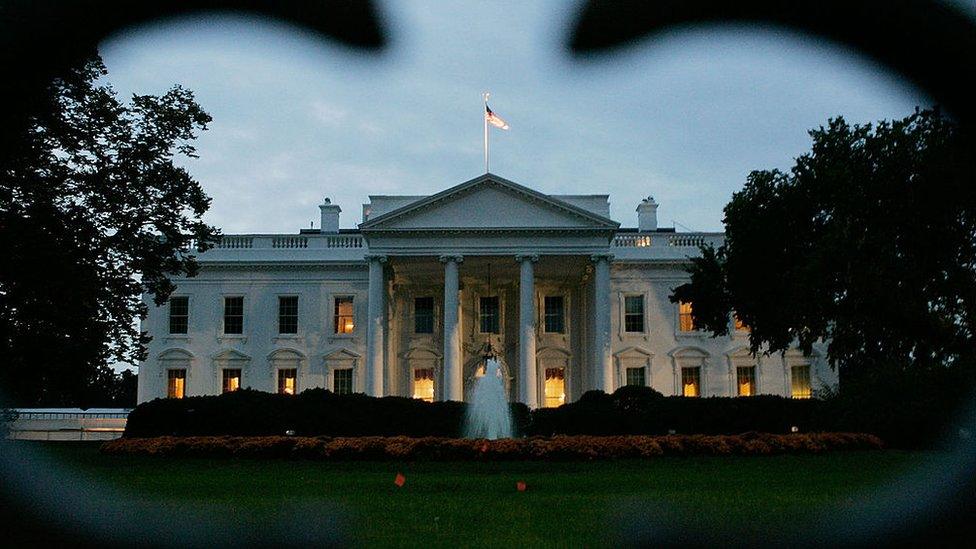
North Korea specifically named the White House as a target
Pyongyang has a history of peddling doctored images- making claims about military prowess and weapons far exceeding its actual capability- for propaganda aimed at domestic and international audiences.
The North this time has also chosen not to release the pictures it's supposedly receiving. It might be withholding the pictorial evidence so its enemies won't know the scope of what it's seeing exactly.
But it has in the past released pictures it's proud of. In 2022, it put out photos of Earth as seen from space, which the North said were taken on their most powerful missile launch in years.
Strategic value
But if it is the case that the satellite is functioning, experts believe the surveillance content delivered would be of a pretty poor quality.
The North Korean satellite has a limited resolution range of of 3m-5m per pixel, analysts say.
"So even if it can see the White House, it has no tactical usage," says Uk Yang, a North Korea military researcher at the Asan Institute for Policy Studies in Seoul.
Despite the low resolution, though, North Korea's satellite now means it can identify and select targets for nuclear strikes. "So the satellite has its strategic meaning," says Mr Yang.
And while it might currently be inadequate for gathering more meaningful intelligence, this move might also be about the North pushing its tech edge.
"The goal is to advance capabilities while normalising its launches... that violate UN Security Council resolutions," says Leif-Eric Easley, a professor of international studies at Ewha University in Seoul.
The regime has long defended its satellite programme. It argues that having it is a sovereign right, a military necessity and a domestic political promise, says Prof Easley.
Dave Schmerler, a satellite imagery expert at the James Martin Center for Nonproliferation Studies (CNS), also says he thinks "it's a big leap for them going from zero to something".
"But until we can see the images they're collecting, we're speculating on its use cases," he told Reuters news agency, external.
Symbolic value
For Pyongyang, having eyes in the sky has also been a long-term goal politically - especially when the West has been able to surveil its territory for decades already.
"Pyongyang resents and fears what American satellites can see and believes it's in a space and arms race with Seoul," says Prof Easley.
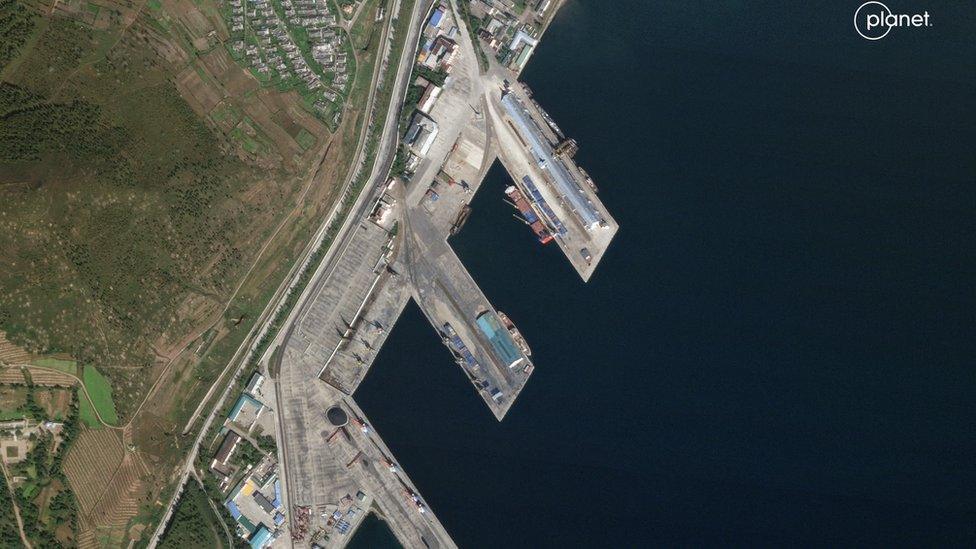
A satellite image from October shows the North Korean port of Rason
That the reports surfaced in North Korea's main newspaper, Rodong Sinmum, suggests they were aimed at both domestic and foreign audiences, says Mr Tertitskiy.
For Western audiences, the North is presenting a "conspicuous show of force" regardless of whether it is real or not, he says, and a deliberate message of deterrence, warning the West against striking the North's military and nuclear bases.
"The message is if you ever dare strike our military targets, we will kill you.
"And one of the reasons why they're so obsessed with the White House - the idea is to send that message personally to Joe Biden: We see you. And not just you America, but you Mr Biden. We see you and we can kill you."
For those living in the isolated Communist dictatorship, the claims of technical advancement are also designed to show the country is performing well. The launch announcement last week and the picture reports on Tuesday bookended "elections" held for local assemblies across the country.
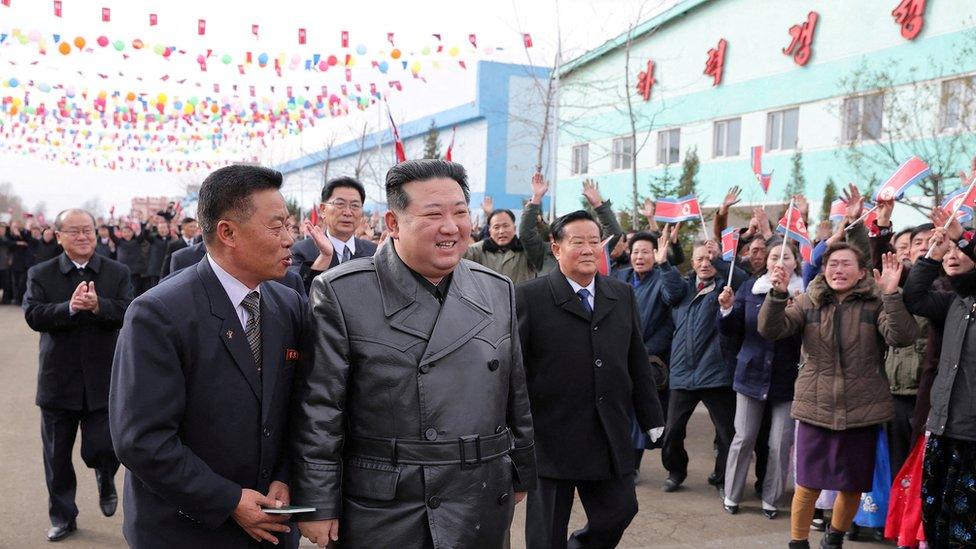
Ecstatic crowds welcomed the Supreme Leader at a polling booth in South Hamgyong on the weekend
"I suspect the claim that the new satellite can see important sites in the US such as the White House and the Pentagon may be aimed at a domestic audience rather than an international one," said Dr Sarah Son, a lecturer in Korean Studies at the University of Sheffield in the UK.
"[This is] based on the fact that ordinary North Korean civilians have no access to the internet and likely have no awareness of the extensive resources available in the rest of the world for looking at satellite imagery of other places."
- Published24 November 2023

- Published23 November 2023
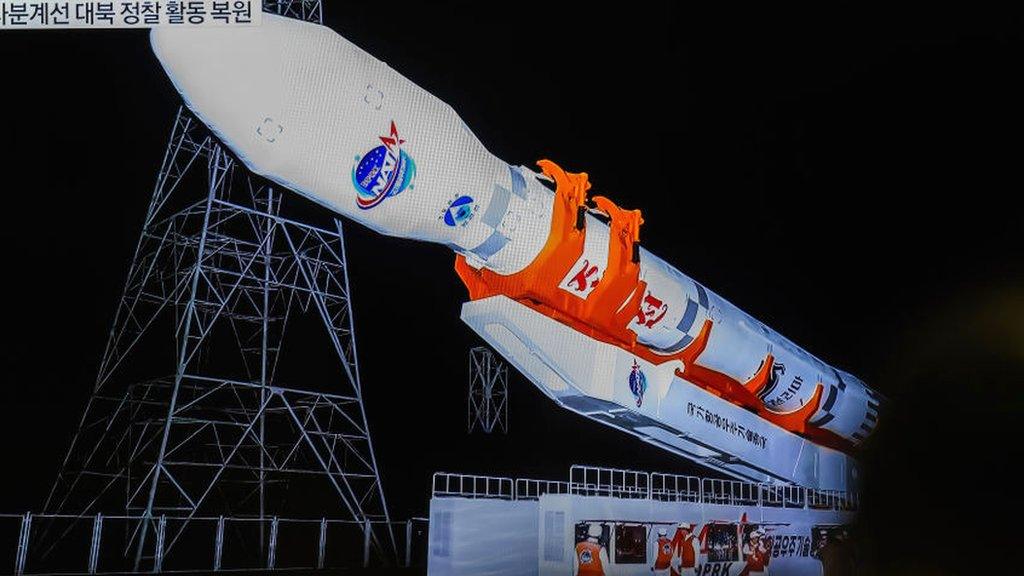
- Published22 November 2023
